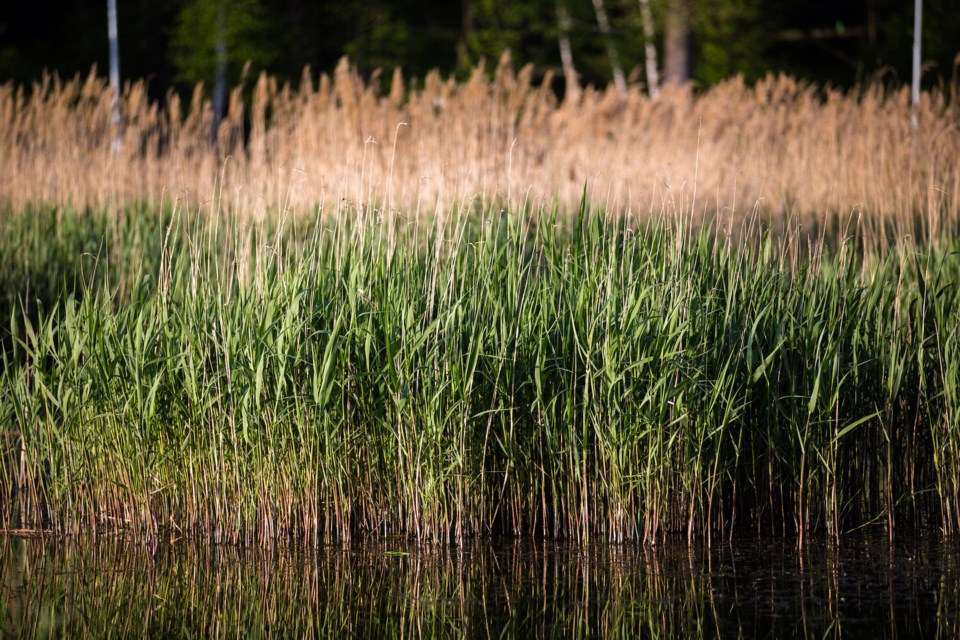To the editor:
Today is World Wetlands Day.
While many of these beautiful places are frozen over this time of year, this occasion gives us a chance to reflect on their importance and the never-ending services they offer to set our communities up for a hopeful future.
Canada is home to one-quarter of the world’s wetlands. Bogs, peatlands, marshes, rivers, lakes, deltas, floodplains and flooded forests cover 15 per cent of our country’s landmass, and we are failing to protect these places. An estimated 70 per cent of southern Canada’s wetlands have been lost. That figure rises to a nearly 95 per cent loss near densely populated areas.
Every time we convert or degrade a wetland, we destroy the environmental benefits these ecosystems provide: filtering water, storing carbon, protecting nearby communities from spring melts and summer droughts, and providing homes for hundreds of plant and animal species.
Wetlands are amazing for all what they do for us. Like giant sponges, they absorb and hold water around our cities and farms, acting as buffers from floods and droughts. Coastal wetlands dampen storm surges by absorbing the wave energy and abating shore erosion. During heavy rains, these giant sponges hold water and release it gradually. Wetlands also provide natural fire breaks, which is incredibly important when considering the wildfires we’ve recently experienced in parts of Canada.
Like landscape-sized water treatment plants, they store and filter the water that we depend on. Their intricate plant life filters out sediment and excess nutrients from the water we use to make our coffee, brush our teeth and quench our thirst.
Wetland loss comes at a price
Around the world and here at home, we are feeling the brunt of the dramatic loss of wetlands. The Insurance Bureau of Canada reported in January that Canada suffered $3.1 billion in insurance damage from severe weather events during 2023. According to the report, insurance losses in this country “now routinely exceed $2 billion annually, and most of it is due to water-related damage.”
Wetlands serve as natural defences that protect our homes and infrastructure from storms and floods and make everyday life for us healthier. An ounce of prevention is worth a pound of cure. We can protect what wetlands remain and restore the ones we have lost. This is a tangible solution to mitigating the effects of severe weather events and our rapidly changing climate.
We have a global responsibility to conserve and restore these areas. The good news is that many communities and conservation organizations like the Nature Conservancy of Canada (NCC) are working on it.
To date, NCC has ensured the future of nearly 168,000 hectares of wetlands on 924 properties across the country. Together, the ecosystems store 87 million tonnes of carbon — equivalent to CO2 emissions from over 97 million passenger vehicles, nearly 136 billion litres of gasoline consumed or 213 million homes’ electricity use in one year. The nature-based solutions for people, our communities and the planet are made possible thanks to the landowners and donors working with us to conserve and care for our country’s wetlands.
Here in Ontario, NCC is continuing to protect and restore 353 wetland sites conserving nearly 24,000 hectares. This spans eco-regions and across great lakes, from fragmented landscapes highly impacted by human development in the south to wetlands and peatlands located in vast expanses of forest in the north.
This Wetlands Day, NCC is pleased to announce the conservation of over 940 hectares on Manitoulin Island in Lake Huron, as well as on Lake Superior’s Black Bay Peninsula, near Thunder Bay.
NCC recently completed a major wetland restoration at the Florian Diamante Nature Reserve on Pelee Island. What was once a marginal field of soybeans now supports diverse wetland species like shorebirds, ducks, songbirds, turtles, and amphibians. The newly planted wildflowers that line the shores attract many species including the endangered monarch butterfly.
These projects bring us hope. But the urgency with which we must protect and restore our wetlands is increasing every day.
As we face the impacts of climate change and the biodiversity crisis together, Canada needs everyone — all levels of governments, corporations, foundations, communities and individuals — to invest, support and volunteer in the efforts to conserve wetlands. Let’s act together to change their future and secure our own.
Dana Kleniewski
Ontario Vice President with Nature Conservancy of Canada



